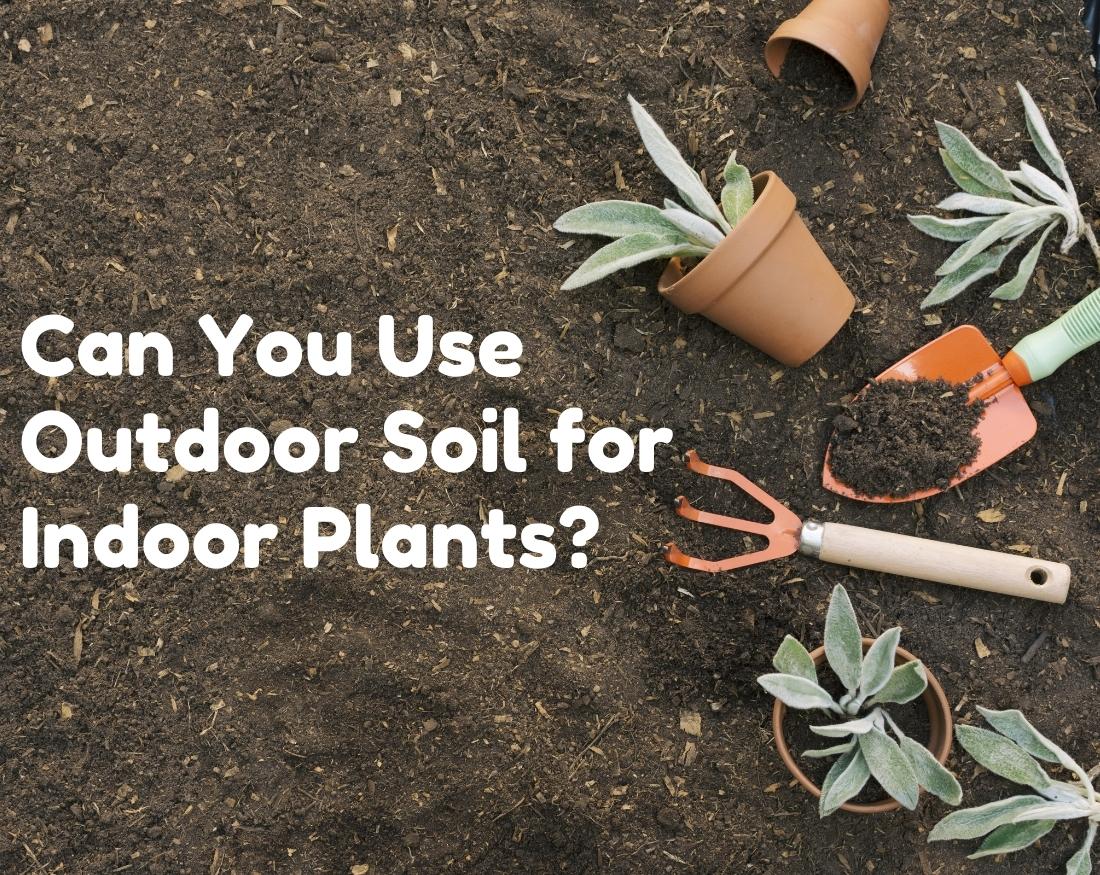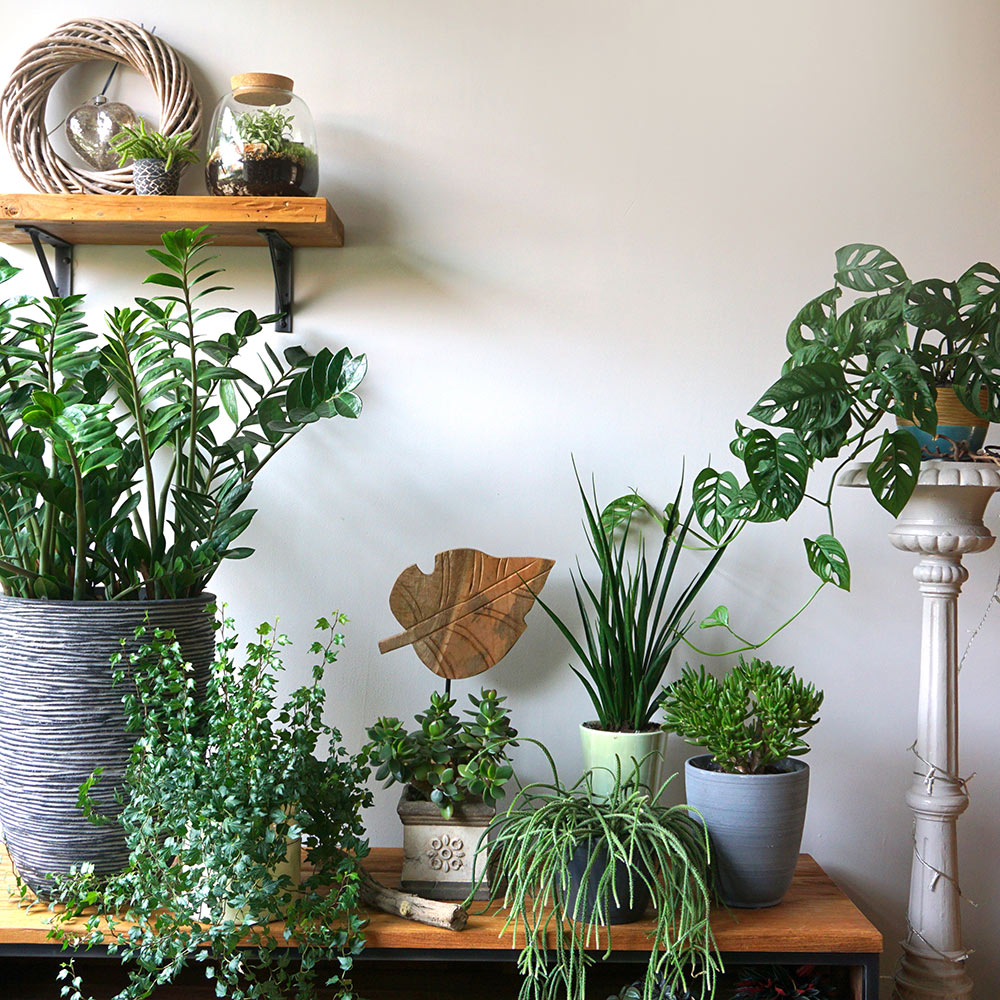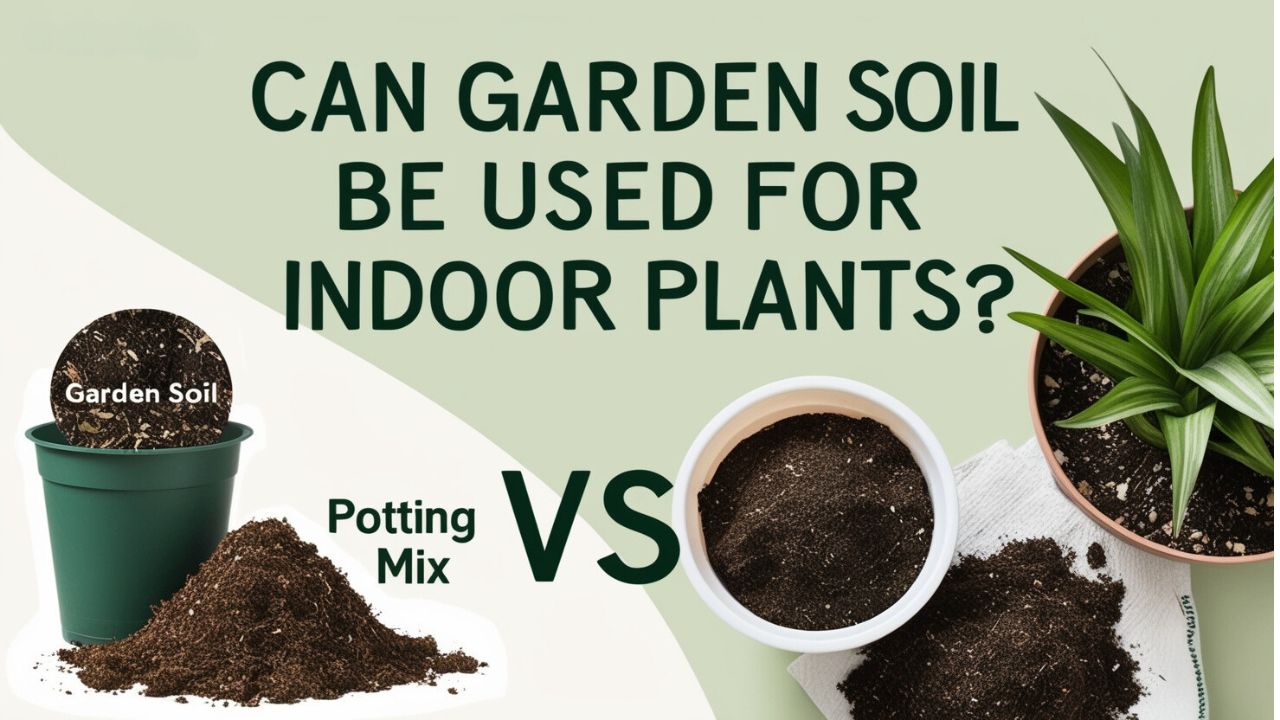Garden soil can be used for indoor plants, but it’s not ideal. It often lacks proper drainage and can harbor pests.
Indoor plants require a well-balanced, nutrient-rich soil to thrive. Garden soil, though rich in organic matter, can be too dense for potted plants. This density restricts air flow and water drainage, leading to root rot and other issues. Indoor plants need a lighter, more aerated medium.
Potting mixes, specifically designed for indoor use, offer better drainage and nutrient balance. They ensure healthy root development and prevent over-watering problems. Using garden soil indoors can introduce pests and diseases. Choosing the right soil mix is crucial for the health and growth of your indoor plants.

Credit: planterhoma.com
Indoor Vs. Outdoor Soil Fundamentals
Understanding the difference between indoor and outdoor soil is crucial for plant health. Each type of soil has unique properties that suit different environments. This section explores the key differences and soil composition variations.
Key Differences
Indoor soil and outdoor soil serve different purposes. Indoor soil is designed for container plants, while outdoor soil supports garden plants.
- Drainage: Indoor soil has better drainage to prevent root rot.
- Nutrient Balance: Outdoor soil has more natural nutrients from organic matter.
- Pest Control: Indoor soil is often sterilized to reduce pests.
Soil Composition Variations
Indoor and outdoor soils have different compositions to meet plant needs. Indoor soil is lighter and more aerated.
| Component | Indoor Soil | Outdoor Soil |
|---|---|---|
| Organic Matter | Peat moss, coco coir | Compost, leaf mold |
| Mineral Content | Vermiculite, perlite | Sand, clay |
| Moisture Control | Water-absorbing crystals | Natural ground moisture |
These differences highlight the importance of using the right soil for your plants. Indoor plants need specific soil to thrive in pots. Outdoor soil works best in gardens where roots can spread freely.
Potential Risks Of Using Garden Soil Indoors
Using garden soil for indoor plants might seem convenient. However, it can introduce several risks. These risks can harm your indoor plants and home environment. Let’s explore these potential hazards in detail.
Pest Infestation Concerns
Garden soil often harbors pests and insects. These include ants, beetles, and worms. Bringing garden soil indoors can lead to pest infestations. Indoor environments lack natural predators. This allows pests to multiply quickly. Infestations can damage plants and cause hygiene issues.
Disease Transmission
Garden soil can carry plant diseases. Pathogens like fungi, bacteria, and viruses thrive in garden soil. Using garden soil indoors can infect your plants. Indoor plants have less resistance to diseases. Infected plants may wilt, rot, or die.
Weed Seed Contamination
Garden soil often contains weed seeds. These seeds can germinate indoors. Weeds compete with your plants for nutrients. This affects plant growth and health. Managing weeds indoors is difficult. They can spread quickly and take over plant pots.
Benefits Of Specialized Indoor Potting Mixes
Specialized indoor potting mixes offer many benefits for your houseplants. These mixes are designed to meet the unique needs of indoor plants. They ensure healthy growth and vibrant foliage.
Improved Drainage
Indoor potting mixes have better drainage. This helps prevent waterlogging. Waterlogged soil can harm plant roots. Good drainage keeps roots healthy and strong.
| Feature | Benefit |
|---|---|
| Lightweight materials | Enhances air circulation |
| Perlite and vermiculite | Improves water retention and drainage |
Balanced Nutrient Content
Specialized mixes have balanced nutrients. These nutrients are essential for plant health. They support growth and flowering. Nutrient-rich soil provides a strong foundation for plants.
- Essential minerals
- Vital vitamins
- Organic matter
Disease-free Medium
Indoor potting mixes are often sterilized. This process kills harmful pathogens. Sterilized soil reduces the risk of disease. Healthy soil means healthy plants.
- Prevents root rot
- Reduces fungal infections
- Minimizes pest infestations
:max_bytes(150000):strip_icc()/difference-between-potting-soil-potting-mix-847812edits-9e6b6dee92a2469d9822355db6151908.jpg)
Credit: www.thespruce.com
Modifying Garden Soil For Indoor Use
Garden soil is rich in nutrients but not perfect for indoor plants. Modifying it makes it suitable for indoor conditions. This section will guide you through sterilization and mixing techniques.
Sterilization Techniques
Sterilizing garden soil is crucial to eliminate pests and diseases. Here are some effective techniques:
- Oven Method: Spread soil on a baking sheet. Bake at 180°F for 30 minutes.
- Microwave Method: Place soil in a microwave-safe container. Heat for 90 seconds per pound.
- Boiling Water: Pour boiling water over the soil. Let it cool and drain.
Mixing With Other Components
Mixing garden soil with other components improves its texture and drainage. Consider these components:
| Component | Purpose |
|---|---|
| Perlite | Improves drainage and aeration |
| Peat Moss | Increases moisture retention |
| Sand | Enhances drainage |
| Compost | Adds organic nutrients |
Follow these steps to create the perfect mix:
- Combine one part garden soil with one part perlite.
- Add one part peat moss to the mixture.
- Mix in one part sand for better drainage.
- Incorporate compost for added nutrients.
This mixture provides balanced nutrients and proper drainage for indoor plants.
Expert Tips For Choosing The Right Soil For Your Indoor Plants
Choosing the right soil for your indoor plants is crucial. Not all soil types are suitable for indoor environments. Garden soil, for instance, may not always be the best option. Here are some expert tips to help you choose the best soil for your indoor plants.
Assessing Plant Requirements
Different plants have different soil needs. Some plants prefer well-draining soil while others need moisture-retentive soil. Cacti and succulents thrive in sandy soil. Ferns and tropical plants love rich, organic matter.
Check your plant’s specific needs. Read plant care labels or research online. Knowing your plant’s natural habitat helps you choose the right soil.
Organic Vs. Inorganic Soil Amendments
Soil amendments enhance soil properties. You can choose between organic and inorganic amendments. Each has its own benefits.
| Amendment Type | Benefits | Examples |
|---|---|---|
| Organic | Improves soil structure, adds nutrients | Compost, Peat Moss, Manure |
| Inorganic | Enhances drainage, retains moisture | Perlite, Vermiculite, Sand |
Choose organic amendments for nutrient-rich soil. Use inorganic amendments to improve drainage and aeration.
Mixing both types can create a balanced soil blend. This provides both nutrients and proper drainage.
Common Mistakes To Avoid With Indoor Plant Soil
Using garden soil for indoor plants can be tricky. Many people make common mistakes that can harm their plants. This section highlights some of the most frequent errors and how to avoid them.
Overwatering Issues
Overwatering is a common mistake with indoor plant soil. Garden soil retains more water than potting soil. This can lead to root rot. Ensure your pots have good drainage. Use a well-draining soil mix. Water your plants only when the top inch of soil is dry.
Ignoring Ph Levels
Ignoring pH levels can harm your indoor plants. Garden soil often has a different pH than potting soil. Most indoor plants prefer a pH between 6.0 and 7.0. Test the pH of your soil before using it. Adjust the pH if needed with lime or sulfur.
| Common Mistakes | Solutions |
|---|---|
| Overwatering | Use well-draining soil, ensure pot drainage |
| Ignoring pH Levels | Test and adjust soil pH |
- Check drainage: Ensure pots have holes at the bottom.
- Use a pH meter: Regularly test soil pH.
- Water wisely: Only water when the soil is dry on top.
The Role Of Soil In Indoor Plant Health
The role of soil in indoor plant health is crucial. Soil affects root growth, aeration, and nutrient supply. Choosing the right soil can make your plants thrive.
Supporting Root Growth
Roots need space to grow and spread. Soil must be loose and crumbly. Garden soil can be dense and compact. This can restrict root growth. Indoor plants need special soil mixes. These mixes support healthy root systems.
Ensuring Proper Aeration
Roots need air to breathe. Proper aeration is vital for indoor plants. Garden soil can hold too much water. This can suffocate the roots. Indoor soil mixes improve air flow. These mixes include perlite or vermiculite. These materials help keep the soil airy.
| Soil Type | Root Growth | Aeration |
|---|---|---|
| Garden Soil | Poor | Poor |
| Indoor Soil Mix | Excellent | Excellent |
- Loose soil supports root growth.
- Proper aeration keeps roots healthy.
Choose the right soil for your indoor plants. Healthy roots lead to healthy plants.

Credit: www.homedepot.com
Advanced Techniques For Optimizing Indoor Plant Growth
Indoor gardening can be challenging. Many people wonder, can garden soil be used for indoor plants? There are advanced techniques that help plants thrive indoors.
Hydroponics As An Alternative
Hydroponics uses water to grow plants without soil. It provides nutrients directly to the roots. This method can be very effective for indoor plants.
- Faster growth: Plants grow quicker with hydroponics.
- Less space: Hydroponic systems take up less room.
- Fewer pests: No soil means fewer bugs.
Creating Custom Soil Blends
Sometimes, garden soil is not ideal for indoor plants. Creating custom soil blends can help. These blends offer the right nutrients and texture.
Here is a simple recipe for a custom soil blend:
- One part potting soil: Provides a base.
- One part perlite: Ensures good drainage.
- One part compost: Adds nutrients.
This blend works well for most indoor plants. You can adjust the mix for specific plant needs.
A table can help you understand the benefits:
| Ingredient | Benefit |
|---|---|
| Potting Soil | Base for the blend |
| Perlite | Improves drainage |
| Compost | Provides nutrients |
These techniques can help your indoor plants grow better. Experiment to find what works best for your plants.
Frequently Asked Questions
What Happens If You Use Outdoor Potting Soil For Indoor Plants?
Using outdoor potting soil indoors can introduce pests and diseases. It may also have poor drainage, affecting plant health.
Can I Use Garden Soil For My Indoor Plants?
No, avoid using garden soil for indoor plants. It may contain pests, diseases, and poor drainage. Use potting mix instead.
Can I Use Miracle Gro Garden Soil For Indoor Plants?
Yes, you can use Miracle Gro garden soil for indoor plants. Ensure proper drainage and avoid overwatering.
Can I Use Garden Soil For Potted Plants?
Using garden soil for potted plants is not ideal. It can compact, causing poor drainage and root problems. Opt for potting mix instead.
Conclusion
Choosing the right soil is crucial for indoor plant health. Garden soil can be too dense and harbor pests. Use a well-draining, sterile potting mix instead. This ensures your indoor plants thrive, free from disease and stress. Proper soil choice promotes healthy growth and vibrant indoor greenery.

My mission is to help you bring the beauty of nature indoors with expert advice, detailed plant care guides, and creative design ideas.




